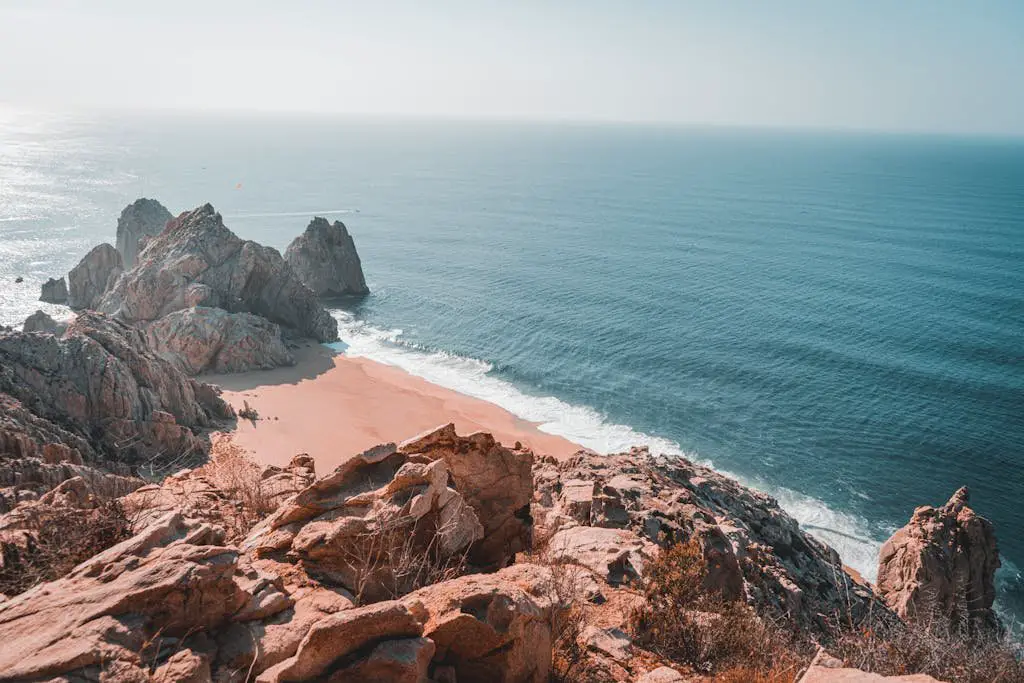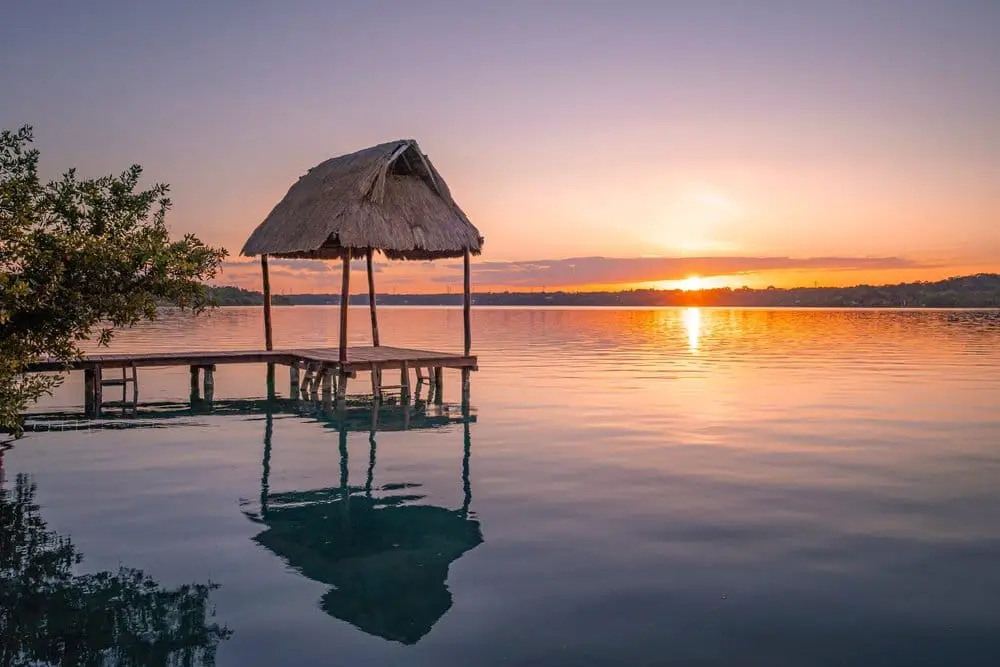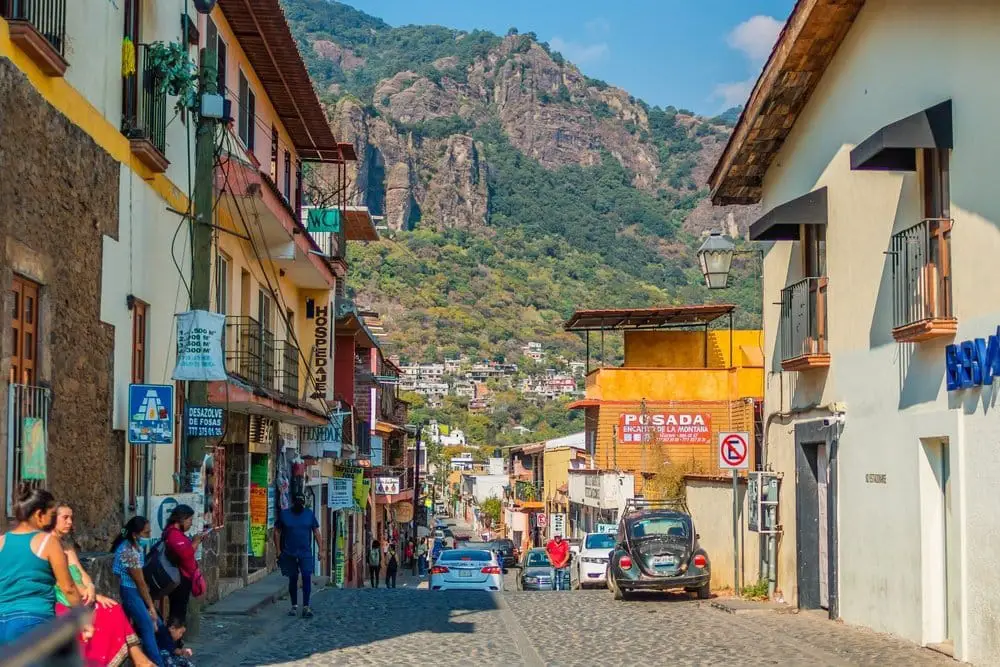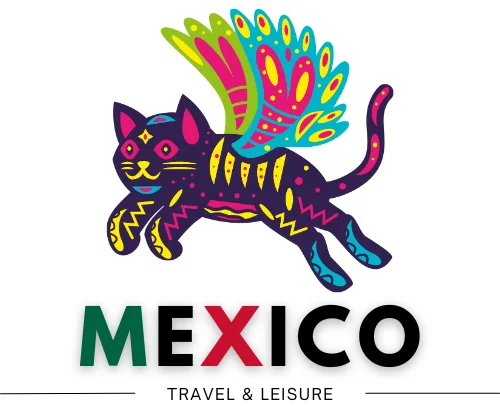The Top 7 Hidden Gems in Mexico

Mexico has long been a favorite destination for international travelers. While destinations like Cancun, Tulum, Playa del Carmen, and Cabo San Lucas continue to attract millions of tourists annually, there’s so much more to this diverse country than its popular resort towns. Here we will discover some of those hidden gems in Mexico,
As experienced travelers know, the most memorable experiences often happen away from the tourist crowds. Mexico offers countless hidden treasures waiting to be discovered by those willing to venture beyond the well-trodden path.
In this guide, we’ll explore seven extraordinary hidden gems in Mexico. They showcase the country’s incredible diversity of landscapes, cultures, and experiences. From ancient Maya cities shrouded in jungle to car-free beach paradises, mystical mountain towns to otherworldly desert landscapes. These destinations offer authentic Mexican experiences that most international tourists miss.
Whether you’re seeking archaeological wonders, pristine beaches, cultural immersion, or natural spectacles, these hidden gems will inspire your next Mexican adventure and help you experience the real Mexico that lies beyond the resort walls.
Hidden Gem #1: Calakmul – The Forgotten Maya Metropolis

Deep in the jungles of Campeche, near Guatemala, lies one of Mexico’s most impressive yet least-visited archaeological treasures: Calakmul. This ancient Maya city once rivaled Tikal in power and influence during the Late Classic Period (600-900 CE). Today it remains shrouded in mystery and jungle vegetation.
Unlike the crowded pathways of Chichen Itza or the Instagram-famous ruins of Tulum, Calakmul offers a rare opportunity to explore a major archaeological site in near solitude. The remote location has kept mass tourism at bay, preserving both the ruins and the surrounding ecosystem.
What makes Calakmul truly special is the combination of archaeological significance and pristine natural environment. The site contains almost 7,000 identified structures, including one of the tallest pyramids in the Maya world, standing at an impressive 148 feet high. Climbing to the top rewards visitors with a breathtaking view of endless jungle canopy stretching to the horizon. The view is occasionally broken by the tops of other ancient structures emerging from the green sea.
The Calakmul Biosphere Reserve surrounding the ruins is home to an astonishing array of wildlife. Lucky visitors might spot howler monkeys swinging through the trees, colorful toucans and parrots, and even glimpse the elusive jaguar. The symphony of jungle sounds provides a dramatic backdrop to your exploration of this hidden gem in Mexico.
Practical Information:
- Getting There: The site is best reached by car from Campeche (188 miles) or Chetumal. Consider hiring a driver or joining a tour if you’re not comfortable with the remote driving conditions.
- Entrance Fee: Approximately 240 pesos (divided between three separate fees as you enter the national park)
- Best Time to Visit: Early morning to avoid heat and increase wildlife spotting opportunities
- What to Bring: Plenty of water, insect repellent, comfortable walking shoes, and binoculars for wildlife viewing
While Chichen Itza sees thousands of visitors daily, Calakmul might welcome only a few dozen, allowing for a more contemplative and authentic experience of Maya history and architecture. For travelers seeking to connect with ancient civilization and untamed nature, Calakmul offers an unparalleled experience. It cannot be found at Mexico’s more frequented archaeological sites.
Real de Catorce – The Mystical Ghost Town

Perched high in the Sierra de Catorce mountains of San Luis Potosí state, the former mining town of Real de Catorce seems frozen in time—a place where legends, history, and mysticism converge in a hauntingly beautiful desert setting. Once a prosperous silver mining center with a population of 40,000 in its 19th-century heyday, the town was largely abandoned after the Mexican Revolution and the decline of silver prices.
Today, this “ghost town” has found new life as a pilgrimage site and an off-the-beaten-path destination for travelers seeking spiritual experiences, dramatic landscapes, and a glimpse into Mexico’s silver mining past. The journey to Real de Catorce is part of its mystique. Visitors must pass through the Ogarrio Tunnel, a narrow one-way passage stretching more than a mile through the mountain.
The town’s cobblestone streets, crumbling colonial buildings, and dramatic mountain backdrop create an atmosphere unlike anywhere else in Mexico. Plaza Hidalgo, the main square, features a distinctive iron kiosk imported from France during the mining boom. Nearby stands the Parish of the Immaculate Conception. It is an impressive church that draws thousands of pilgrims each October. They come to pay homage to St. Francis of Assisi.
Real de Catorce holds special significance for the indigenous Huichol (Wixáritari) people, who consider the surrounding desert a sacred place. They make annual pilgrimages to harvest peyote and perform traditional ceremonies. This spiritual connection adds another layer to the town’s already mystical atmosphere.
For adventure seekers, exploring the surrounding desert landscape is a must. The unique Willys vehicles—jeep-like cars designed to handle the rugged terrain—take visitors to abandoned mines, ghost towns, and the vast peyote desert (another hidden gem in Mexico). The stark beauty of the landscape, with its cacti, unusual rock formations, and expansive vistas, creates perfect conditions for photography.
Practical Information:
- Getting There: The nearest major city is San Luis Potosí (about 3.5 hours by car). The final approach requires passing through the Ogarrio Tunnel.
- Where to Stay: Several boutique hotels occupy restored colonial buildings. Hotel El Real de Catorce and Hotel Mesón de la Abundancia offer historic charm with modern amenities.
- What to Eat: Try regional specialties like enchiladas potosinas and asado de boda (a traditional wedding stew).
- Best Time to Visit: October for the festival of St. Francis; spring (March-May) for pleasant temperatures and wildflowers.
While tourists flock to colonial cities like San Miguel de Allende and Guanajuato, Real de Catorce offers a more authentic and mystical experience without the crowds. The combination of history, spirituality, and dramatic desert landscapes makes this ghost town one of Mexico’s most captivating hidden gems.

In the southern reaches of Quintana Roo lies a body of water so strikingly beautiful it seems almost unreal. Laguna Bacalar is known as the “Lagoon of Seven Colors”. It dazzles visitors with its extraordinary spectrum of blue hues ranging from turquoise to deep sapphire. Despite being just a few hours’ drive from Cancun, this freshwater lagoon remains relatively undiscovered by international tourists, making it a perfect alternative to the crowded beaches of the Riviera Maya and one of the most attractive hidden gems in Mexico.
What makes Bacalar truly special is its pristine water quality and the natural phenomena that create its famous colors. The lagoon gets its distinctive hues from its white limestone bottom and the presence of stromatolites—some of the oldest living organisms on Earth. These rare formations, similar to coral reefs but created by microorganisms, are found in only a few places worldwide and date back billions of years.
Unlike the ocean beaches of Tulum or Playa del Carmen, Bacalar offers a calm, crystal-clear freshwater experience. The lagoon stretches for about 42 kilometers (26 miles), providing ample space for exploration. Visitors can enjoy activities like kayaking, paddleboarding, and sailing without the crowds typical of more popular destinations. The famous Canal de los Piratas (Pirates’ Channel) offers some of the most vibrant colors. It is a must-visit spot for photographers.
The town of Bacalar itself maintains a laid-back, authentic atmosphere with colorful buildings, local restaurants, and a historic fort. Fort San Felipe, built in the 18th century to defend against pirate attacks, now houses a small museum. It also offers panoramic views of the lagoon from its walls.
Practical Information:
- Getting There: Bacalar is approximately 4 hours by car from Cancun or 30 minutes from Chetumal. ADO buses also connect major cities to Bacalar.
- Where to Stay: Eco-friendly boutique hotels and lakeside cabañas offer sustainable accommodation options. Many properties have private docks with direct lagoon access.
- Activities: Boat tours, kayaking, paddleboarding, swimming at Cenote Azul, visiting stromatolites (look but don’t touch—they’re fragile and protected).
- Sustainability Tips: Use biodegradable sunscreen and personal care products to protect the lagoon’s delicate ecosystem. Avoid touching stromatolites as they take thousands of years to form.
While Bacalar is gaining popularity among travelers seeking alternatives to Mexico’s busy beach resorts, it maintains its charm and beauty. The local government and community are committed to sustainable tourism practices to preserve the lagoon’s extraordinary colors and ecological importance. For travelers seeking the beauty of the Caribbean without the crowds and commercialization, Bacalar offers a serene blue paradise.
Troncones Beach – The Undiscovered Pacific Paradise

Mexico’s Pacific coast is home to well-known destinations like Puerto Vallarta and Acapulco. The small beach community of Troncones remains delightfully under the radar. It is truly one of many hidden gems in Mexico. It is located just 30 minutes north of Ixtapa and Zihuatanejo in the state of Guerrero. This three-mile stretch of golden sand offers an authentic coastal experience that feels like Mexico from decades ago.
Troncones Beach stands out for its understated beauty and relaxed atmosphere. Unlike the developed resort areas, here you’ll find uncrowded beaches lined with coconut palms, simple open-air restaurants under palapas, and a genuine connection to local life. The consistent warm water temperatures, averaging around 79°F year-round, make it ideal for swimming and water activities in any season.
What truly sets Troncones apart is its accessibility to budget-conscious travelers. Local restaurants serve fresh seafood and authentic Mexican cuisine at remarkably affordable prices. Many meals cost under $5, a stark contrast to the inflated prices at tourist hotspots. This affordability extends to accommodations as well, with options ranging from simple beachfront bungalows to boutique hotels, all at a fraction of what you’d pay in better-known destinations.
For surf enthusiasts, Troncones offers excellent waves for both beginners and experienced surfers. The main beach has gentle breaks perfect for learning, while nearby La Saladita (known as “The Wave Machine”) provides long, rolling left breaks that attract surfers from around the world. Unlike crowded surf spots like Sayulita or Puerto Escondido, you’ll only share the waves with a handful of others.
The surrounding area offers opportunities for horseback riding along the shore, yoga retreats in serene settings, and hiking to nearby freshwater springs. Birdwatchers will appreciate the diverse species that inhabit the area, including herons, pelicans, and frigatebirds.
Practical Information:
- Getting There: The nearest airport is Ixtapa-Zihuatanejo International Airport, about 45 minutes away. Rental cars or taxis are available for the short drive to Troncones.
- Where to Stay: Accommodations range from budget-friendly casitas to mid-range boutique hotels like Present Moment Retreat or Hacienda Eden.
- Best Time to Visit: November through April offers the most pleasant weather with minimal rainfall. Surfers may prefer summer months for bigger swells.
- Local Specialties: Don’t miss trying the fresh ceviche, grilled fish zarandeado-style, and coconut shrimp at beachfront restaurants.
Troncones represents what many travelers seek but rarely find: an affordable, authentic Mexican beach town that hasn’t been transformed by mass tourism. The absence of large resorts, chain restaurants, and nightclubs preserves the tranquil environment and connects visitors to the natural beauty and local culture that make Mexico’s Pacific coast so special.
Tepoztlán – The Magical Mountain Town

Tepoztlán has earned its reputation as one of Mexico’s most magical destinations. It is nestled in a valley surrounded by dramatic cliffs and unusual rock formations. Located just 50 miles south of Mexico City in the state of Morelos, this pueblo mágico (magical town) combines natural beauty, pre-Hispanic history, and a mystical atmosphere that has attracted spiritual seekers, artists, and curious travelers for generations. If you are looking for hidden gems in Mexico, Tepoztlán has much to offer.
The town’s mystique is deeply rooted in local legend, which claims that Tepoztlán is the birthplace of Quetzalcoatl, the feathered serpent deity central to many Mesoamerican religions. This spiritual significance continues to permeate the town, with many visitors reporting unusual energy and experiences during their stay. In recent decades, stories of UFO sightings over the mountains have added another layer to Tepoztlán’s enigmatic reputation.
The centerpiece of any visit is the hike to El Tepozteco, a pre-Hispanic pyramid atop a mountain overlooking the town. The moderately challenging trail climbs about 1,200 feet over a mile and a half, rewarding hikers with spectacular views of the valley and the chance to explore the ancient temple dedicated to the Aztec god of pulque (a traditional alcoholic beverage). The pyramid’s remote location and the engineering feat of its construction make it all the more impressive.
In town, the cobblestone streets are lined with colorful buildings housing artisan shops, wellness centers, and restaurants serving traditional cuisine. The Former Convent of the Nativity, a UNESCO World Heritage Site dating from the 16th century, showcases impressive murals and architecture from the early colonial period. The adjacent museum displays artifacts from the region’s pre-Hispanic cultures.
The weekend experience
Tepoztlán truly comes alive on weekends when its crafts market fills the streets with vendors selling everything from handwoven textiles and ceramics to medicinal herbs and spiritual items. The market is an excellent place to observe the blend of indigenous traditions and contemporary Mexican culture. It makes Tepoztlán unique.
For those seeking wellness experiences, the town offers numerous options for traditional healing practices. Temazcales (pre-Hispanic sweat lodges) provide purification rituals guided by local healers, while various spas and wellness centers offer treatments based on ancient knowledge and local ingredients.
Practical Information:
- Getting There: Tepoztlán is about 1.5 hours by car or bus from Mexico City, making it perfect for a weekend escape from the capital.
- Where to Stay: Boutique hotels like Posada del Tepozteco offer stunning views of the surrounding mountains, while numerous wellness retreats provide more immersive experiences.
- When to Visit: Weekdays for tranquility, weekends for vibrant market atmosphere. September 8th celebrates the town’s patron saint with festivities.
- Local Specialties: Try itacates (triangular corn masa filled with cheese and various toppings) and ice cream made from exotic fruits at the market.
While colonial towns like San Miguel de Allende receive international acclaim and crowds, Tepoztlán offers a more authentic experience where indigenous traditions remain strong and the connection between nature and spirituality is palpable. Its accessibility from Mexico City makes it an ideal addition to any central Mexico itinerary, providing a magical mountain retreat that feels worlds away from urban life.
El Pinacate Biosphere Reserve – The Otherworldly Desert

In the northwestern corner of Mexico, where the Sonoran Desert meets the Sea of Cortez, lies a landscape so unusual it has been used by NASA to train astronauts and test lunar vehicles. El Pinacate and Gran Desierto de Altar Biosphere Reserve, a UNESCO World Heritage site in the state of Sonora, offers visitors an otherworldly experience unlike anywhere else in Mexico—or perhaps on Earth.
The reserve’s most distinctive features are its volcanic craters, known locally as “maar” craters. The largest and most impressive, El Elegante, measures nearly a mile across and 800 feet deep, with perfectly sloped walls descending to a flat bottom. Standing at the rim, visitors often report a sense of awe at both the geological forces that created such formations and the stark beauty of the desert landscape stretching to the horizon.
What makes El Pinacate a true hidden gem in Mexico is the diversity of geological wonders concentrated in one area. Beyond the craters, visitors can explore vast lava flows, cinder cones, and North America’s largest active sand dune system. The contrast between the black volcanic rock and the golden dunes creates a visual spectacle that photographers find irresistible, particularly during the golden hours of early morning and late sunset.
Perhaps most impressive is the night sky experience at El Pinacate. With minimal light pollution, the reserve offers some of the best stargazing opportunities in North America. The clear desert air and open horizons reveal a dazzling display of stars, planets, and the Milky Way. It is a humbling reminder of our place in the universe.
Practical Information:
- Getting There: The reserve is approximately 50 miles southwest of Puerto Peñasco (Rocky Point). A 4WD vehicle is recommended for exploring beyond the visitor center.
- Visitor Center: The Schuk Toak Visitor Center provides excellent exhibits on the geology, ecology, and cultural significance of the area.
- Guided Tours: Consider hiring a local guide for deeper exploration of the reserve. They can provide valuable insights about the ecosystem and ensure safety.
- When to Visit: October through April offers the most comfortable temperatures. Summer months can be dangerously hot.
- What to Bring: Plenty of water, sun protection, sturdy footwear, and a full tank of gas—services are limited within the reserve.
While tourists flock to Mexico’s beaches and colonial cities, El Pinacate remains relatively unknown to international visitors. This lack of crowds allows for a more profound connection with the landscape and a sense of discovery that’s increasingly rare in our well-traveled world. For those willing to venture into Mexico’s northern deserts, El Pinacate offers a glimpse of a primordial Earth and a chance to experience true wilderness just hours from the US border.
Hidden Gem #7: Yelapa – The Car-Free Beach Haven

Tucked into a secluded cove on Mexico’s Pacific coast, accessible only by boat, Yelapa represents the beach paradise many travelers dream of but rarely find in today’s developed world. This small fishing village south of Puerto Vallarta in Jalisco state has maintained its authentic charm largely due to one distinctive feature—there are no cars. The absence of roads connecting Yelapa to the mainland has preserved its pristine beaches and traditional way of life.
The journey to Yelapa is part of the experience. Water taxis depart regularly from Puerto Vallarta and Boca de Tomatlán. They take passengers on a scenic 45-minute boat ride along the coast. As you approach the village, the view is postcard-perfect: a crescent-shaped beach backed by lush jungle-covered mountains, with the small collection of buildings that make up Yelapa nestled between the two.
What makes Yelapa truly special is its perfect balance of natural beauty and basic comforts. Unlike completely undeveloped beach destinations, Yelapa offers enough amenities to make your stay comfortable—restaurants serving fresh seafood, a variety of accommodation options, and even reliable Wi-Fi in many places. Yet it remains free from the development that has transformed other coastal areas, with no large resorts, chain restaurants, or shopping centers.
The main beach is a hub of gentle activity, with local vendors offering fresh pies (Yelapa is famous for its homemade pies), cold drinks, and seafood. Palapas provide shade for relaxing, while the calm, protected waters are perfect for swimming and paddleboarding. For those seeking even more seclusion, a short walk leads to Playa Isabel, a smaller beach that’s often nearly empty.
Natural Attractions
Beyond beach relaxation, Yelapa offers several natural attractions. A 30-minute hike through the jungle leads to a beautiful waterfall with refreshing pools for swimming. The surrounding mountains provide excellent hiking opportunities with panoramic views of Banderas Bay. Boat tours offer chances to spot dolphins, manta rays, and humpback whales (in winter months).
The village itself, with its narrow footpaths winding between colorful homes and small businesses, invites exploration. Locals are generally friendly and accustomed to visitors while maintaining their traditional fishing and agricultural lifestyle. This authentic cultural experience is increasingly rare in Mexico’s more developed tourist destinations.
Practical Information:
- Getting There: Water taxis depart from the Los Muertos Pier in
Puerto Vallarta or from Boca de Tomatlán. The journey takes 45 minutes to an hour.
- Where to Stay: Accommodations range from simple beachfront cabañas to more
upscale options like Hotel Lagunita or the upcoming Four Seasons Tented Camp
(opening soon).
- Electricity and Internet: Most accommodations now have 24-hour
electricity and Wi-Fi, though service can be intermittent. – What to Bring: Cash (there are no ATMs), biodegradable sunscreen, insect repellent, and a flashlight for navigating paths at night.
- Best Time to Visit: November through April offers dry weather and the
chance to see humpback whales.
While tourists crowd the beaches of Cancun and Puerto Vallarta, Yelapa offers a glimpse of what Mexican coastal villages were like before mass tourism. The car-free environment creates a peaceful atmosphere where the sounds of waves, birds, and occasional live music replace the noise of traffic. For travelers seeking to disconnect from modern stress while still enjoying basic comforts, Yelapa provides the perfect balance of accessibility and escape.
